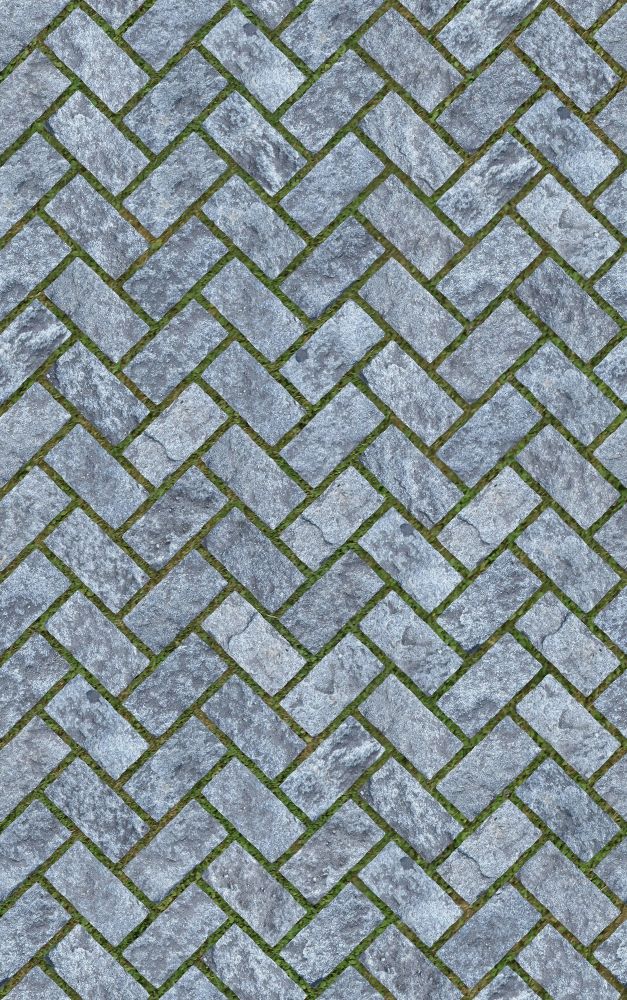Paving Setts Herringbone
Category
Stone
Download
Edit
Paving setts, also known as Belgian pavé, are heavy duty bricks of squared-off quarried stone for use on roads, pavements, driveways and landscaping projects and renowned for their extremely hard-wearing, durable nature. Their resurgent use stems from a desire to transform perfunctory, utilitarian public or shared surfaces such as asphalt and concrete slabs to a more human scale, aesthetically softer and more visually and haptically appealing material. Setts are hardy, durable and well suited to foul weather, muddy and dirty environments, having been traditionally used in rural and agricultural areas. Historically, setts were used on steep farm roads to provide more purchase underfoot for pedestrians and more grip for horses’ hooves when pulling carts or farming equipment due to their riven surfaces, while joints between blocks allowed water to drain easily off of the surface, ranging from 75-200mm in depth and width, with lengths from 75-450mm which, in combination with their loadbearing capacities, make them well suited to heavy vehicular traffic loads. Bluestone is a term used to denote fine grain but robust varieties of silt- or sandstone with a bright, blue-grey, granite coloured hue. Characteristically, bluestone is any subset of these overarching stone types which are easily worked or split into slabs of flagstone or strips with a smooth surface, consisting of any suitably hard wearing stone such as basalt, granite, sandstone and caithness stone. The natural stone aesthetic is distinctive yet timelessly classic, being used to create rustic and contemporary aesthetics alike with earthen tones and unique surface finishes. Their rich stratification and variety of surface textures also help improve grip when wet which, in combination with their outstanding robustness, make them particularly popular in cold, wet climatic conditions.
Setts differ from cobbles in that they are usually squarer, dimensioned cubes of stone, whereas cobbles tend to be rounded with smoother edges and similar in shape to pebbles, albeit larger, defined by the Udden-Wentworth scale as larger than pebbles but smaller than boulders. Paving setts are suitable for both pedestrian and vehicular traffic, due to their extremely hard wearing, durable nature and contemporary applications range from domestic driveways and landscaped elements to roads, pavements and town centre hardscaping features, and can be used in conjunction with contrasting flag stones, blocks, kerbs and steps or on their own.
This particular paving sett texture displays a tumbled finish, whereby the fresh cut stone is gently spun in a rotating drum with a mixture of water and fine aggregate to wear edges and corners down to a smoother, more rounded profile, achieving a weathered appearance, which creates a richer stratification to enhance grip while removing sharp edges to reduce the likelihood of puncturing tyres and to help create a softer, more natural appearance.
A seamless stone texture with paving setts arranged in a herringbone pattern. Seamless textures can be tiled repeatedly across a surface without visible seams making them useful for architectural drawings and 3D models. This image can be used as a SketchUp texture, Revit material or imported into Photoshop for use in 2D illustrations. A high resolution version of this texture is available, as well as CAD hatches and PBR maps with Architextures Pro.

